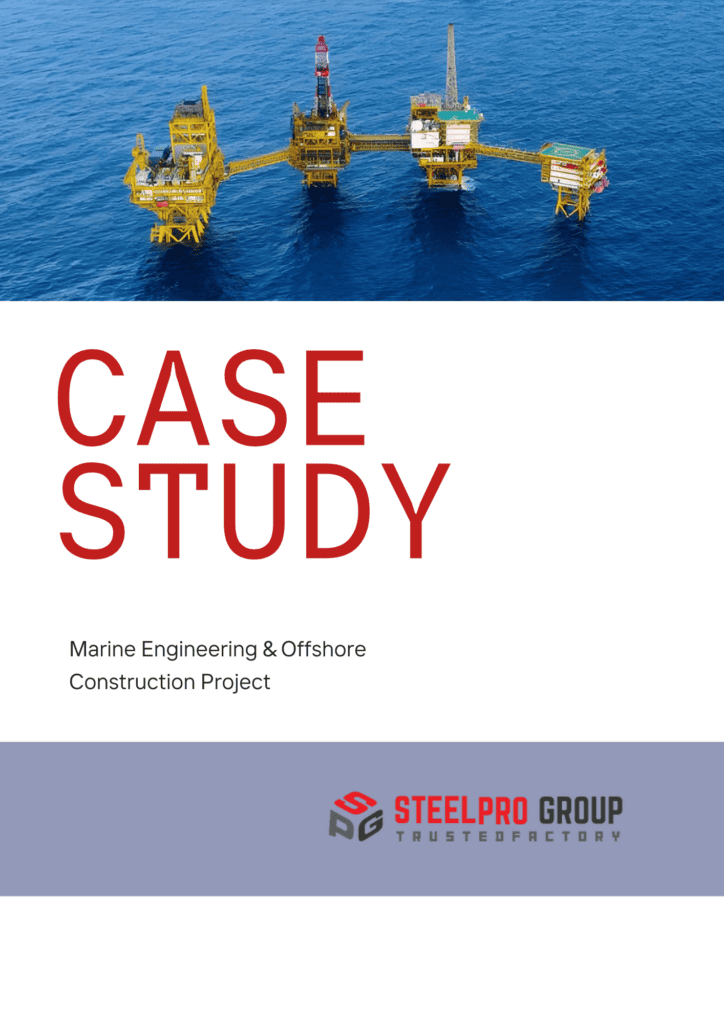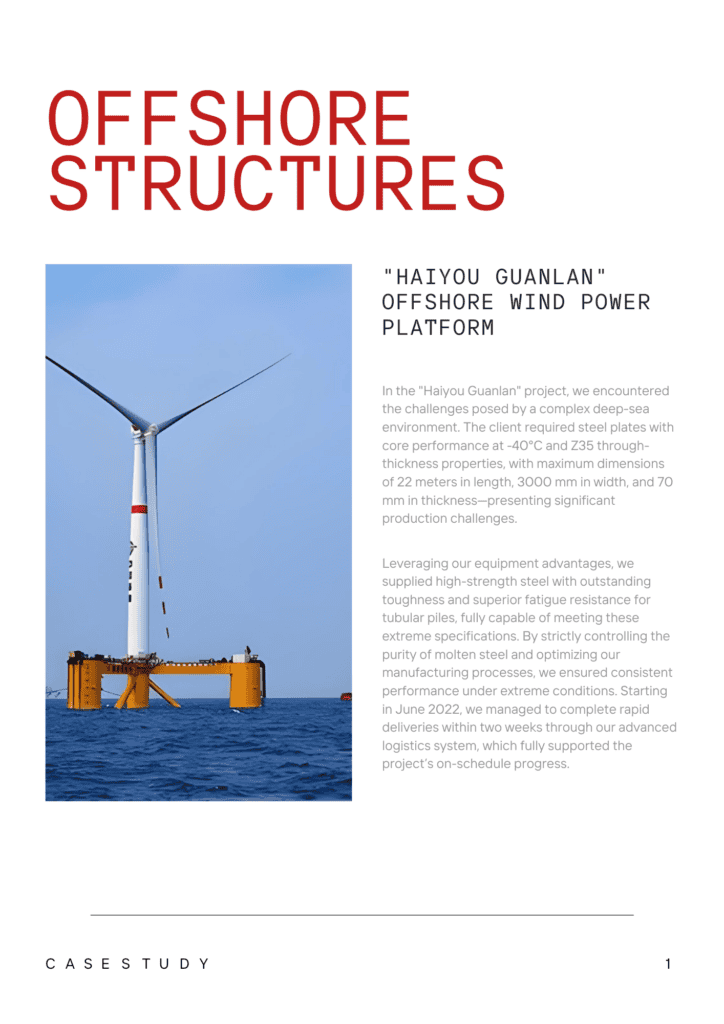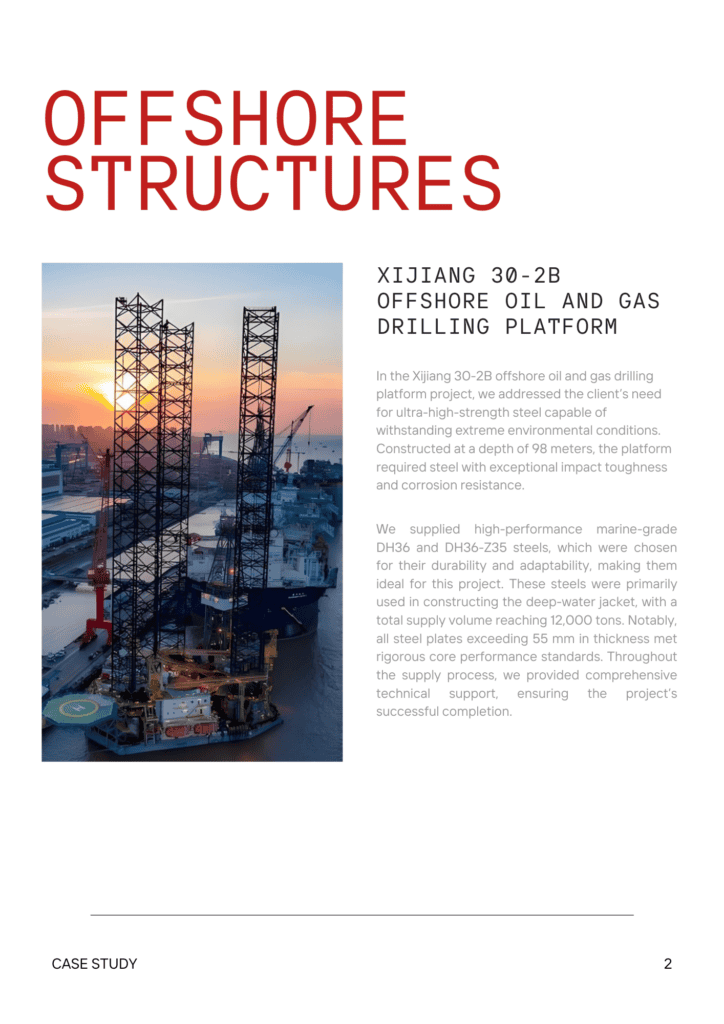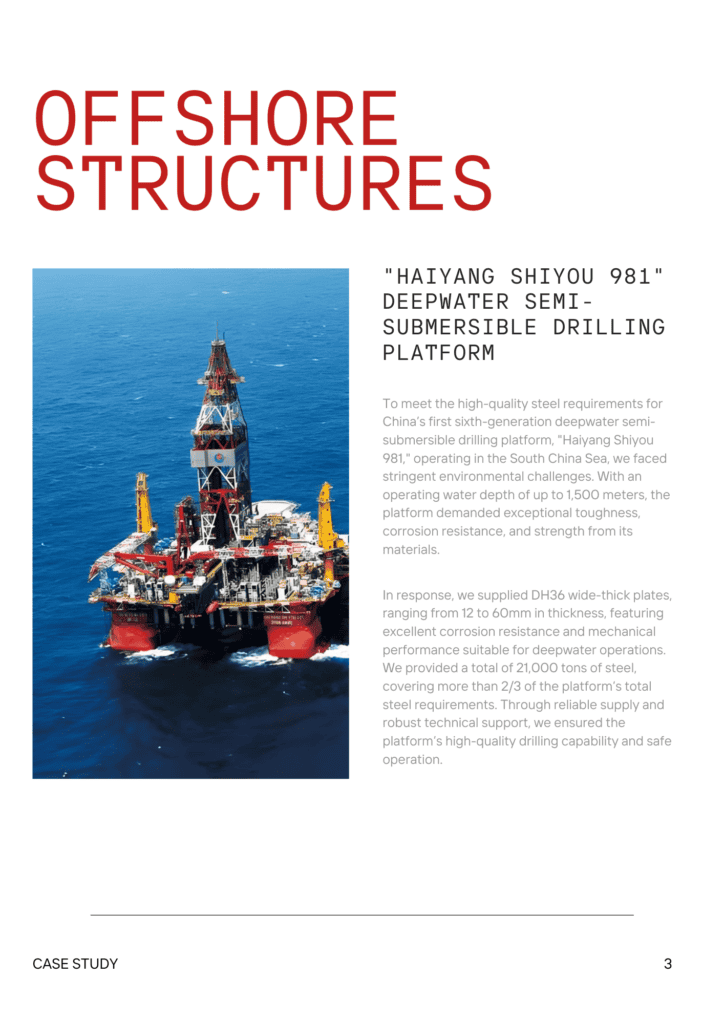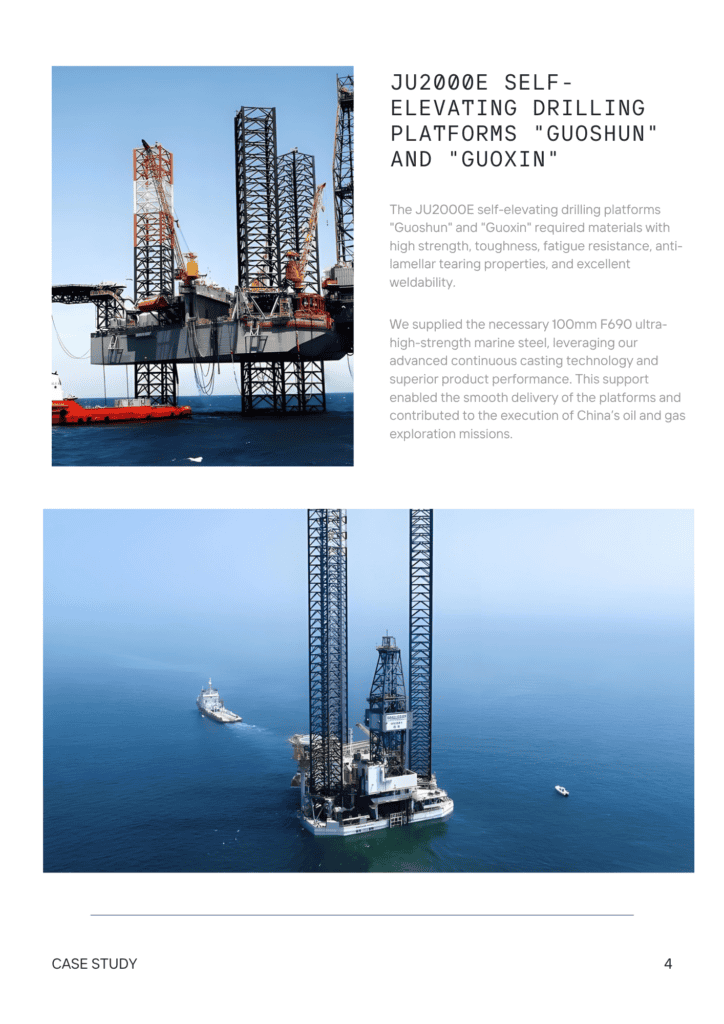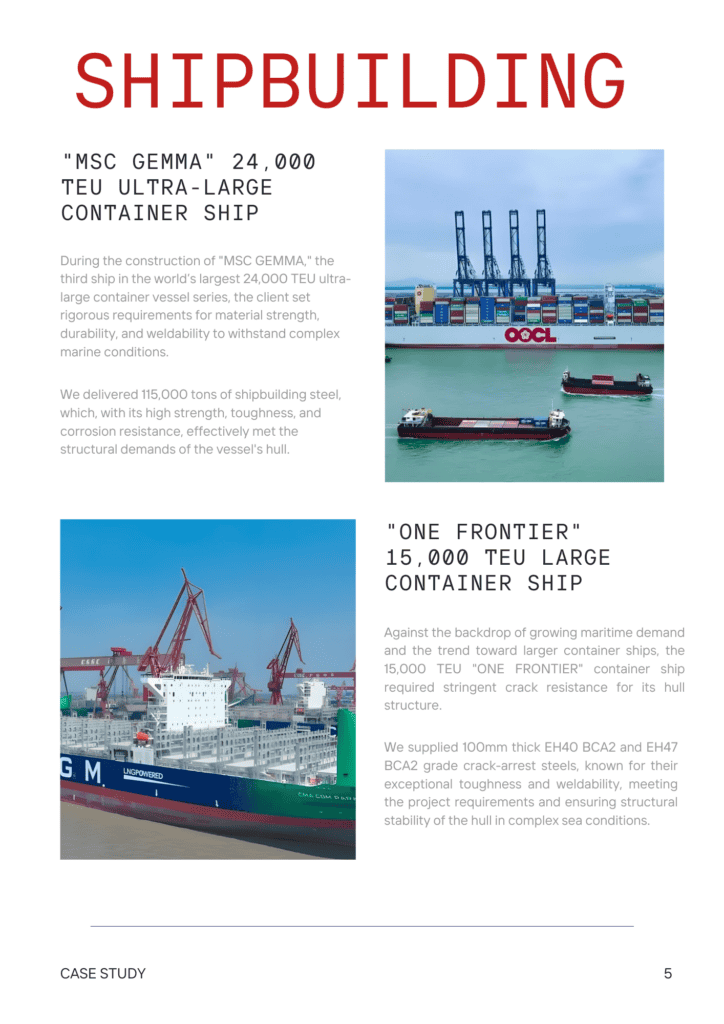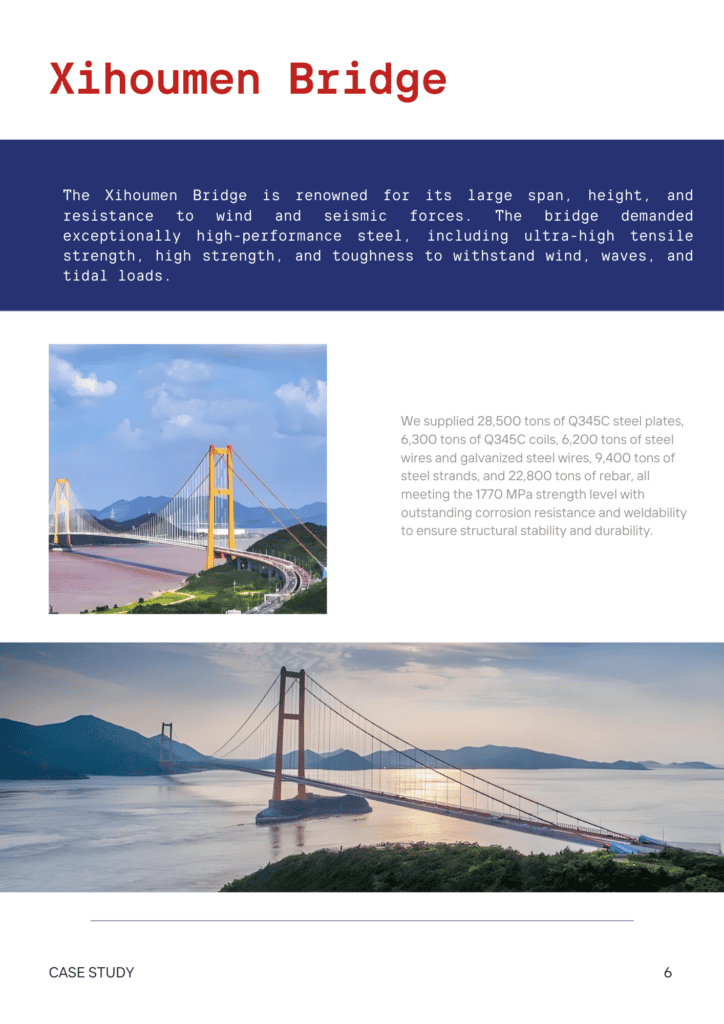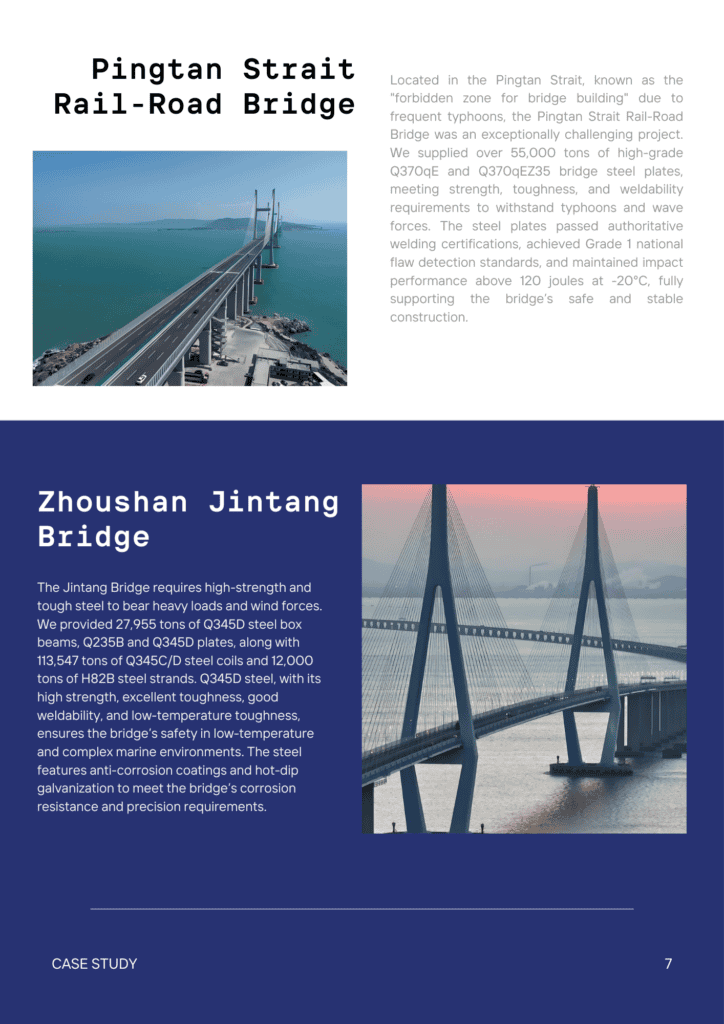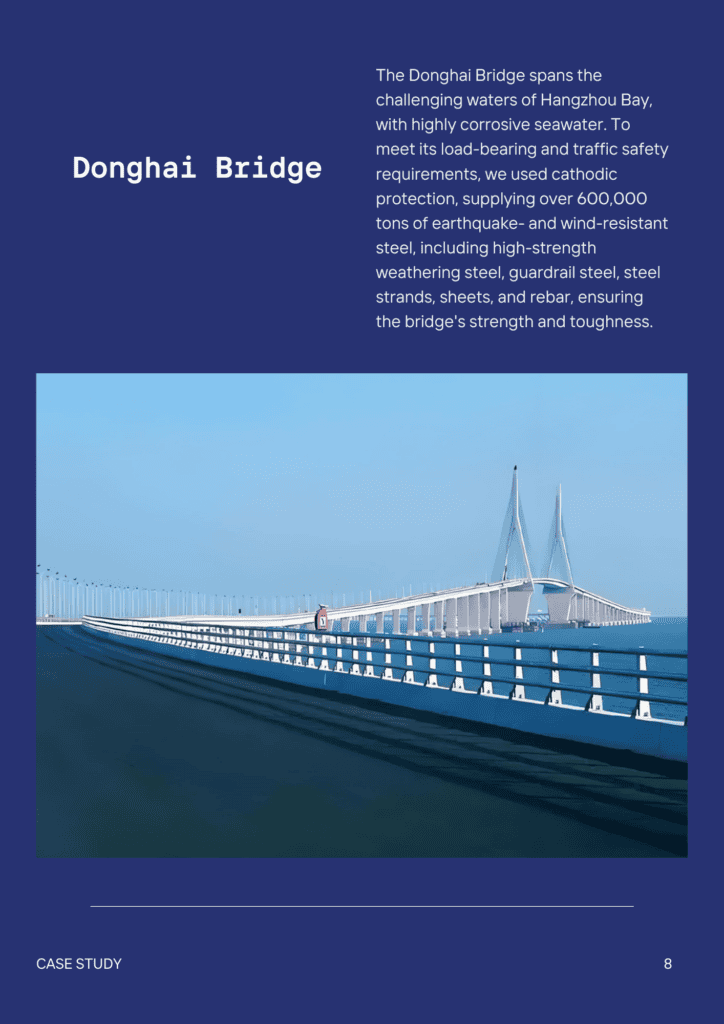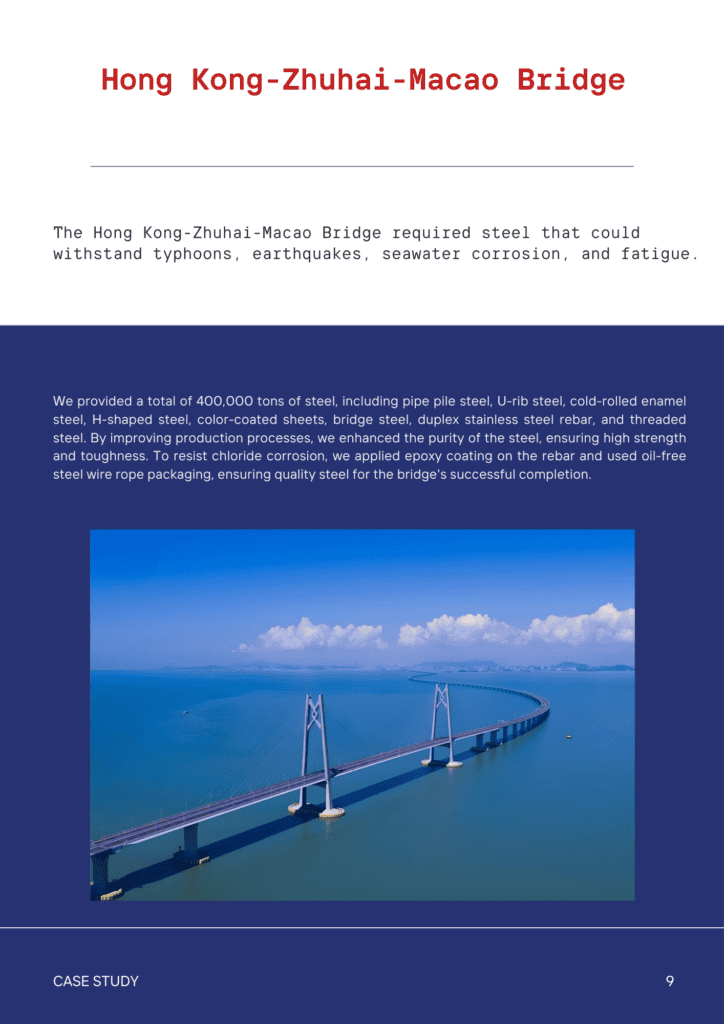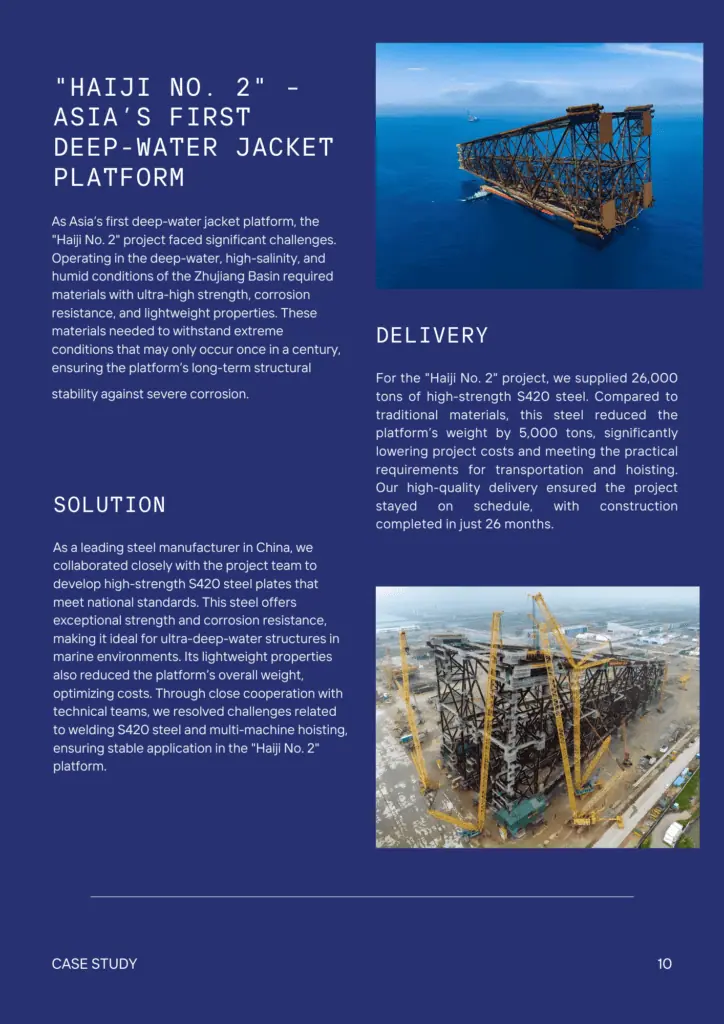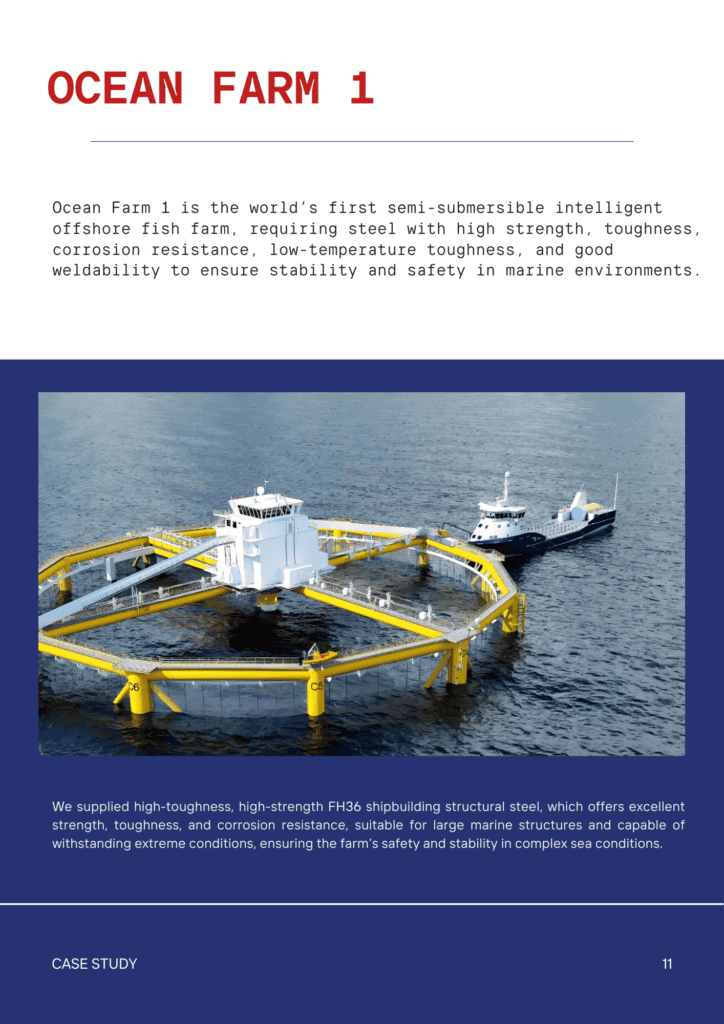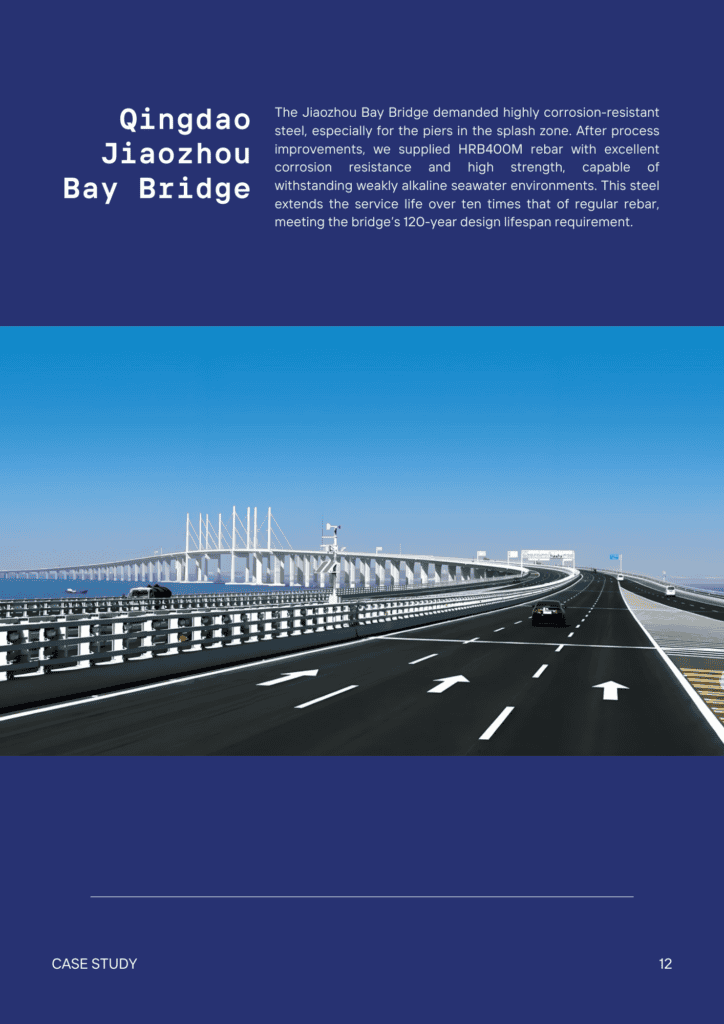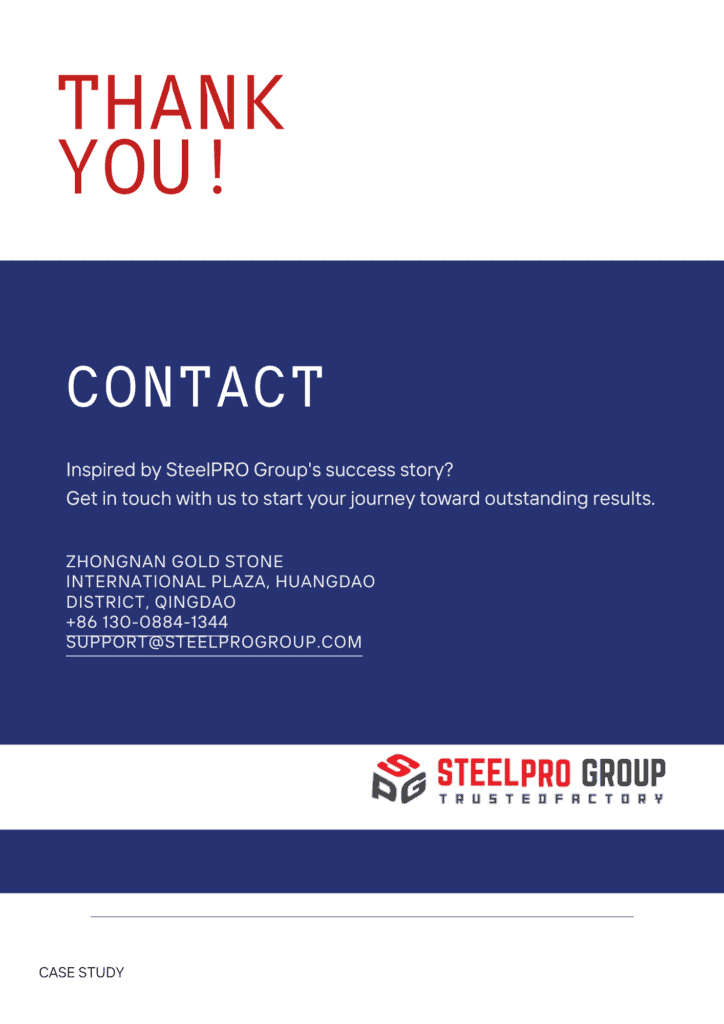Q500 Series | High-Strength Structural Steel
Q500 Series | High-Strength Structural Steel
SteelPRO Group provides Q500 series structural steel plates for bridges in stock.
Standards: ISO, ASTM/ASME/AISI, EN, GB/T, DIN, JIS, BS, etc.
Grades: Q500C, Q500D, Q500E
Material: High-Strength Low-Alloy Steel (HSLA)
Thickness: 6-120 mm, or customized
Width: 900-4800 mm, or customized
Length: 3000-25000 mm, or customized
Shape: Plate, Profile (Beam, Angle, Channel), Pipe, Coil, Bar, or as request
Condition of Delivery: N/HR/T/Q+T/TMCP, or as request
Stock: In sto
Origin: Hebei/Henan/Jiangsu, China
Port: Qingdao
Description
What is Q500
Q500 series steel is high-strength, low-alloy structural steel commonly used in construction and heavy machinery. Its primary components include carbon, manganese, and small amounts of silicon, with micro-alloying elements like vanadium or niobium to enhance strength. Common grades include Q500C, Q500D, and Q500E, with increasing levels of toughness and weldability in low-temperature environments.
Naming Rules:
- Q: Yield strength.
- 500: Minimum yield strength of 345 MPa.
- C/D/E/F: Quality grades. Toughness at 0℃/-20℃/-40℃/-60℃. (e.g. Q500D)
Q500 steel has an excellent strength-to-weight ratio, making it ideal for load-bearing structures. It also offers good resistance to wear and impact, contributing to its durability in tough conditions. Q500 steel is frequently used in the construction of bridges, high-rise buildings, mining machinery, and heavy-duty equipment. Its combination of strength and toughness makes it a go-to material for demanding applications.
Characteristics of Q500 Steel
- High strength for increased durability and load-bearing capacity.
- Excellent corrosion resistance, ideal for harsh environments.
- Good weldability, making fabrication easier and faster.
- Superior toughness, ensuring performance in low-temperature conditions.
- Versatile applications in construction, bridges, and heavy machinery.
Chemical Compositions
| Element | Q500C | Q500D | Q500E |
|---|---|---|---|
| Carbon, C | ≤0.18 | ≤0.18 | ≤0.18 |
| Silicon, Si | ≤0.6 | ≤0.6 | ≤0.6 |
| Manganese, Mn | ≤1.8 | ≤1.8 | ≤1.8 |
| Phosphorus, P | ≤0.03 | ≤0.03 | ≤0.025 |
| Sulfur, S | ≤0.03 | ≤0.025 | ≤0.020 |
| Chromium, Cr | ≤0.6 | ≤0.6 | ≤0.6 |
| Nickel, Ni | ≤0.8 | ≤0.8 | ≤0.8 |
| Copper, Cu | ≤0.55 | ≤0.55 | ≤0.55 |
| Molybdenum, Mo | ≤0.2 | ≤0.2 | ≤0.2 |
| Nitrogen, N | ≤0.015 | ≤0.015 | ≤0.015 |
| Titanium, Ti | ≤0.2 | ≤0.2 | ≤0.2 |
| Vanadium, V | ≤0.12 | ≤0.12 | ≤0.12 |
| Niobium, Nb | ≤0.11 | ≤0.11 | ≤0.11 |
| Boron, B | 0.015 | 0.015 | 0.004 |
| Aluminum, Al b | – | – | ≥0.015 |
Note:
- The letters A, B, C, D, E in steel grades indicate quality levels.
- For profiles and bars, the maximum P and S content can be increased by 0.005%, with grade A steel allowing up to 0.045%.
- When grain-refining elements are added, the total of (Nb+V+Ti) should not exceed 0.22%, and (Mo+Cr) should not exceed 0.3%.
- For residual elements, the Cr, Ni, and Cu content must each be no more than 0.3%. If added intentionally, their content should meet the specified values or be agreed upon between supplier and buyer.
- If using total aluminum (Al<sub>t</sub>) content, it must be at least 0.02%.
Physical Properties
| Property | Metric | Imperial |
|---|---|---|
| Density | 7.85 g/cm³ | 0.283 lb/in³ |
| Melting Point | 1425-1460°C | 2597-2660°F |
| Thermal Conductivity | 50.2 W/m·K | 29 Btu·ft/h·ft²·°F |
| Specific Heat Capacity | 486 J/kg·K | 0.116 Btu/lb·°F |
| Thermal Expansion Coefficient | 11.7 × 10⁻⁶ /°C | 6.5 × 10⁻⁶ /°F |
| Electrical Resistivity | 0.2 µΩ·m | 0.12 µΩ·ft |
Mechanical Properties
| Grades | Yield Strength (MPa) min for Thickness in mm | Tensile Strength min. | Elongation | V-Type Impact Test | |||||
| ≤16mm | 16–40mm | 40–63mm | 63–80mm | 80–100mm | MPa | % min | Test Temperature ℃ | Impact Absorption Energy KV₂/J | |
| Q500C | ≥500 MPa | ≥480 MPa | ≥470 MPa | ≥450 MPa | ≥440 MPa | 540-770 MPa | ≥17% | 0 | ≥55 (long) |
| Q500D | ≥500 MPa | ≥480 MPa | ≥470 MPa | ≥450 MPa | ≥440 MPa | 540-770 MPa | ≥17% | -20 | ≥47 (long) |
| Q500E | ≥500 MPa | ≥480 MPa | ≥470 MPa | ≥450 MPa | ≥440 MPa | 540-770 MPa | ≥17% | -40 | ≥31 (long) |
Industries & Applications
| Industry | Application |
|---|---|
| Construction | Bridges, High-rise buildings, Structural beams, Reinforced concrete |
| Heavy Machinery | Excavators, Cranes, Bulldozers, Mining equipment |
| Energy | Wind turbine towers, Offshore platforms, Power plant structures, Pipelines |
| Infrastructure | Dams, Highway barriers, Overpasses, Tunnels |
| Transportation | Railway tracks, Shipbuilding, Heavy-duty trailers, Construction vehicles |
Machining
Heat Treatment
- Normalizing: Heat to 900-950°C, hold for uniform temperature, then air cool.
- Quenching: Heat to 900-950°C, hold for uniform temperature, then water or oil quench.
- Tempering: After quenching, temper at 200-700°C depending on desired properties, then air cool.
- Stress Relief: Heat to 500-650°C, hold for 1-2 hours, then air cool.
Surface Finish
- Shot Blasting: Removes rust and scale, enhancing surface roughness for coatings.
- Pickling: Uses acid to clean the surface, removing oxides and contaminants.
- Galvanizing: Coating with zinc to prevent corrosion.
- Powder Coating: Adds a durable, corrosion-resistant finish.
- Painting: Protects against weather and corrosion.
*Customization is available upon request.
Our Service
SteelPRO Group – manufacturer and solution provider for special steel, offering multi-industry application solutions and customised services, 100% quality free, accompanying customers in their growth!
Our Quality Control
- Roundness
- Tolerance
- Microstructure
- Non-Destructive Testing
- Destructive Testing
- Process Control
Service Integration Processing
- Welding
- Metal Fabrication
- CNC Machining
- Lathe
- Forming
QUESTION 1
QUESTION 2
QUESTION 3
QUESTION 4
QUESTION 4
CONTACT
CONTACT
Certifications







Other Products
-
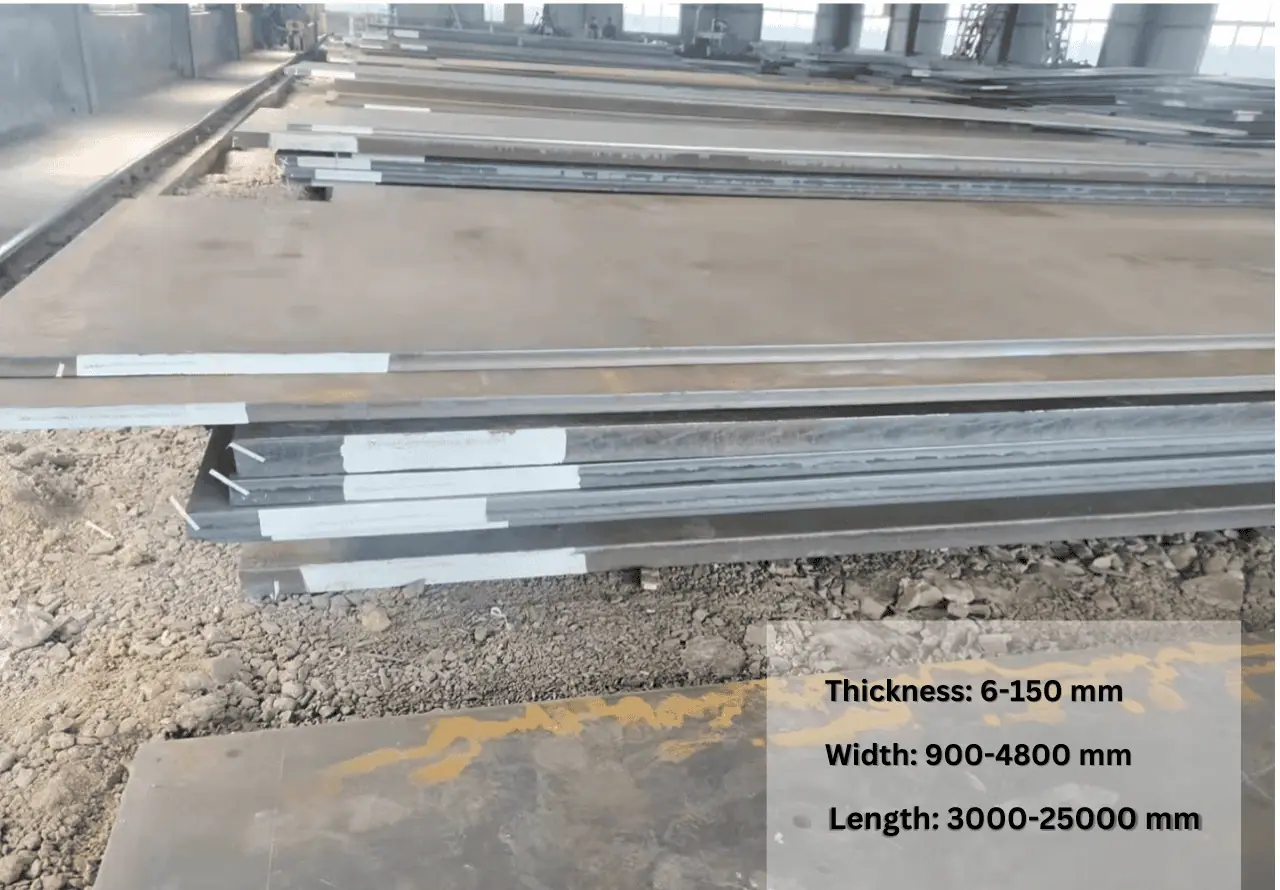
-
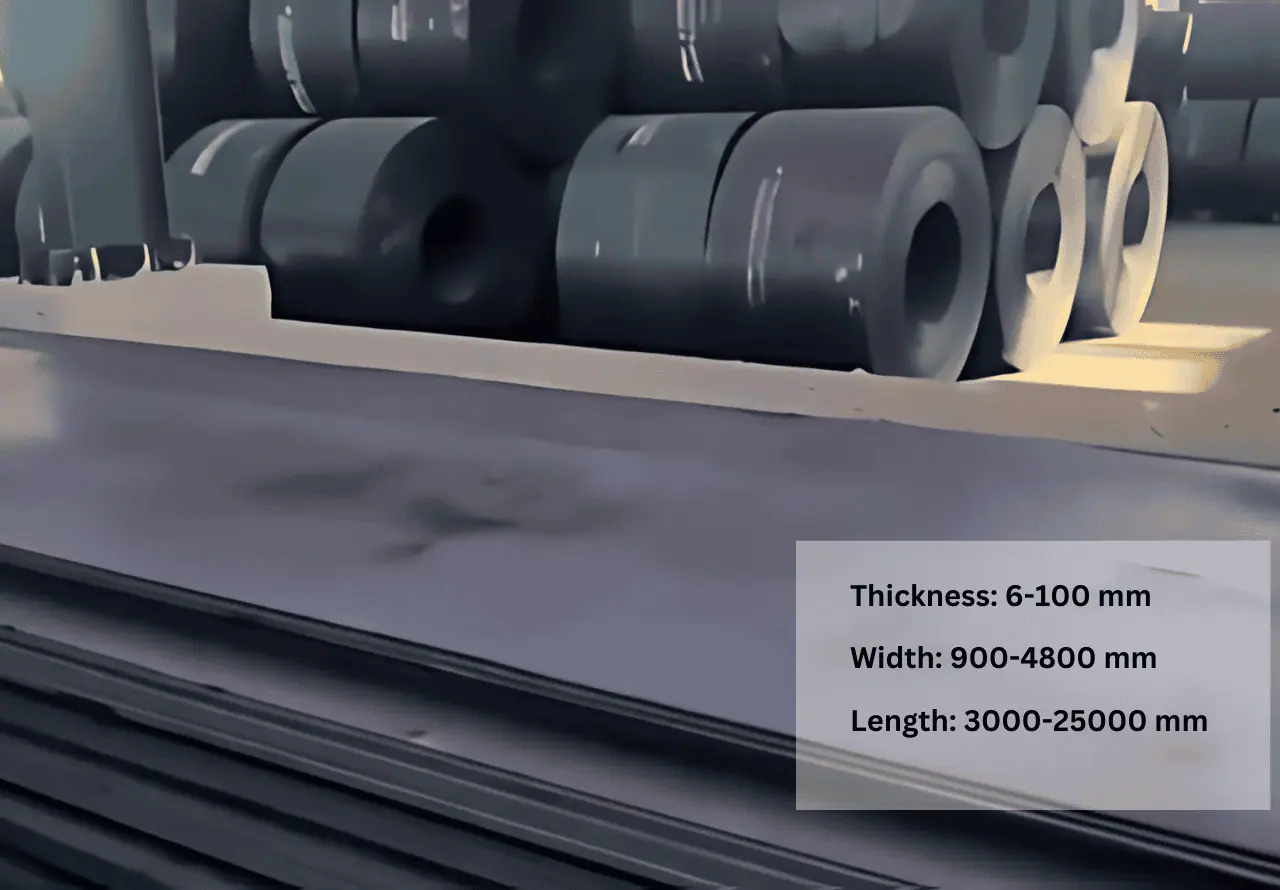
SteelPRO Group offers FH550 high-strength structural steel plates for shipbuilding....
-
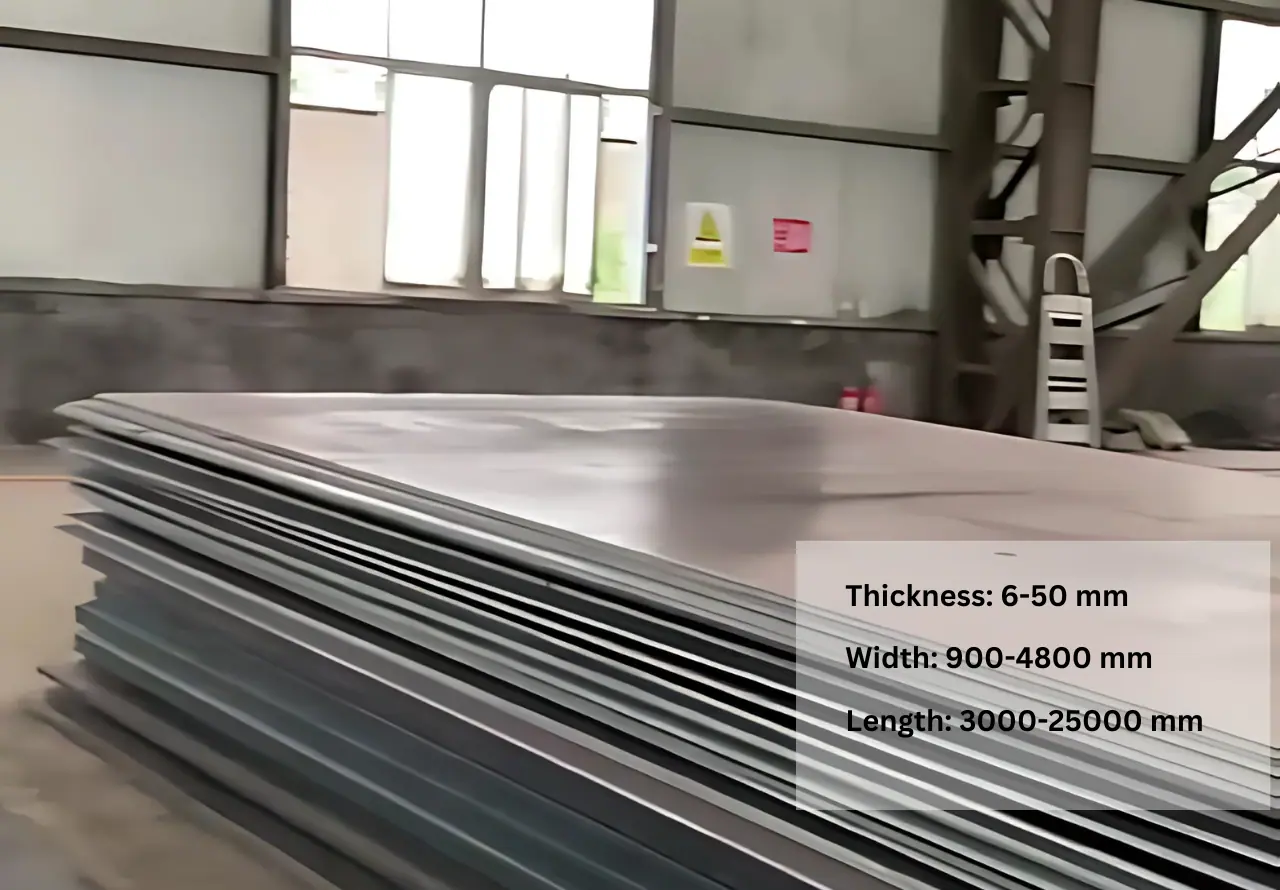
SteelPRO Group offers DH550 high-strength shipbuilding steel plates in stock....
-
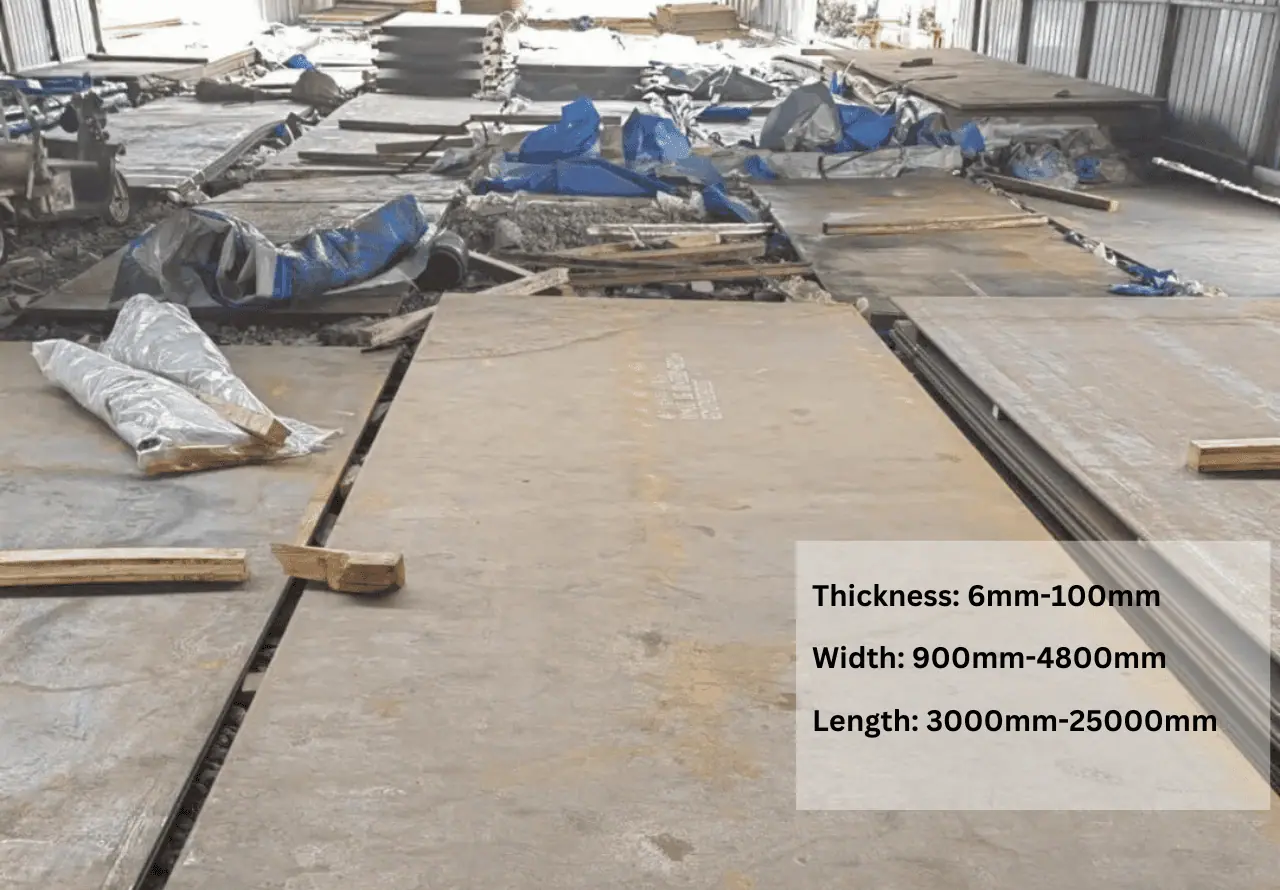
SteelPro Group offers FH36 high-strength steel for shipbuilding. It has...



